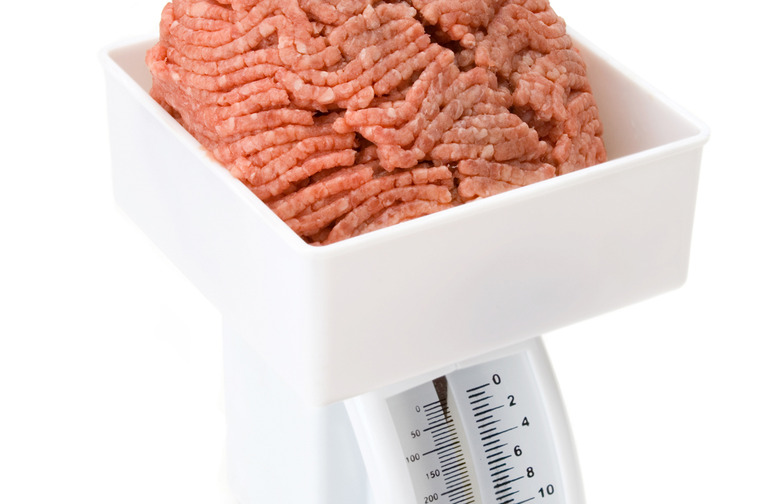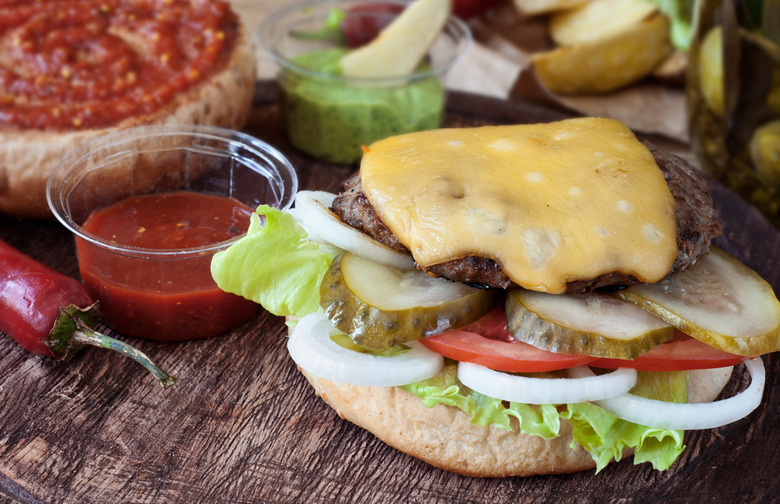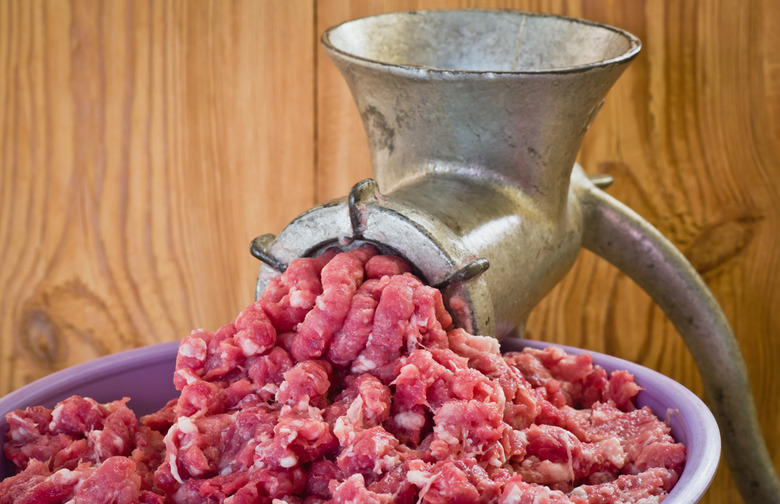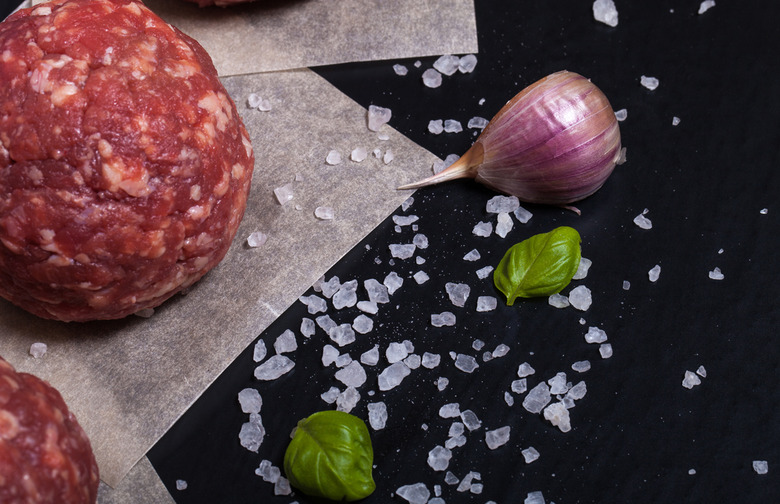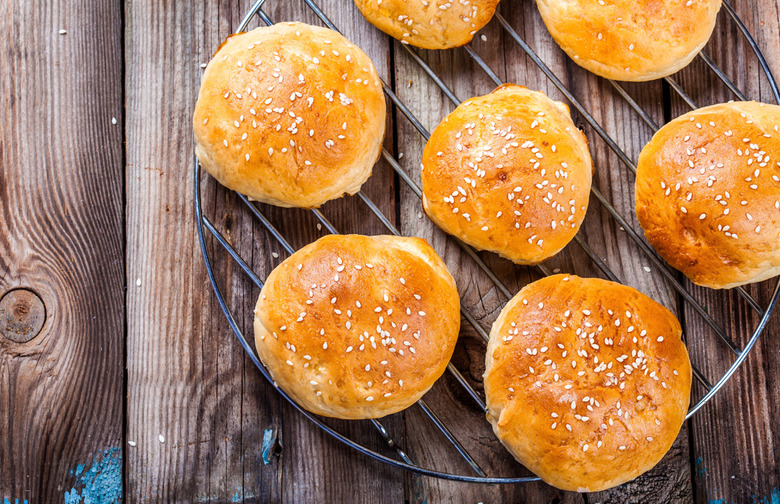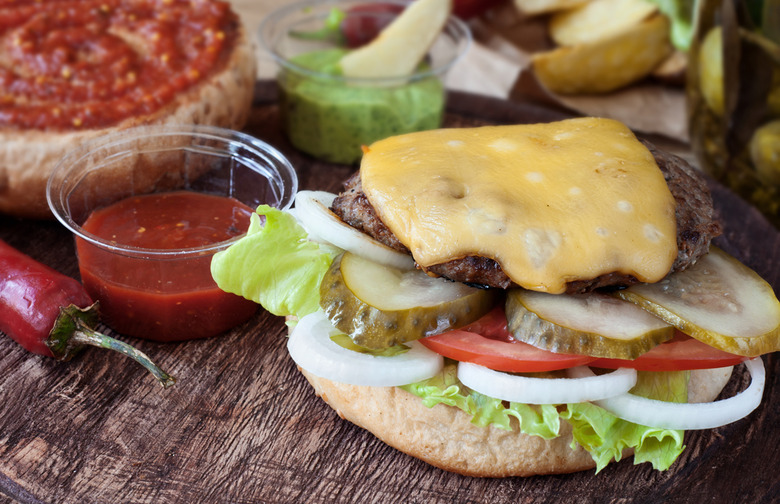How To Make Restaurant-Quality Burgers At Your Backyard Barbecue
How to Make Restaurant-Quality Burgers at Your Backyard Barbecue
What's more iconic than the burger in American cuisine? No matter where I am in the world, sometimes I just need a burger, as stereotypical American as that might sound. There is a reason burgers are one of the most popular foods to cook on a grill. Even burger-giant McDonald's lost track of how many burgers it has sold. The last known tally taken in 1994 claimed 99 billion burgers had been sold by the fast food chain.
Yet, many of us struggle to recapture the taste of our favorite restaurant-quality burger at home. Whether you want a thick steakhouse-style burger or thin, stacked Shake Shack-esque patty sandwiched between a soft roll, there are some pointers to help you make your favorite flavorful burger right in your own backyard.
From how and when to season to selecting the perfect grind of meat, we have an easy-to-follow 13-step process that will yield tender, juicy burgers every time you have a craving for this American classic.
Check-out our guide for making restaurant-quality burgers in your own backyard.
The Right Beef
Here is the first trick to a decent burger: never buy premade beef patties. First off, you don't really know what part of the cow it came from or its freshness. If you aren't up for the task of grinding your own beef at home, ask your butcher to grind yours fresh. You can use different cuts of meat, but a safe bet is always a blend of chuck. Which brings us to the blend of meat: A lean-to-fat ratio of 70/30 is perfect for burgers cooked medium-rare to medium-well, if you lean towards a rare to medium-rare cooking temperature, reduce the fat content to 20, so you aren't biting into bits of un-rendered fat.
Keep Everything Cold
You want to keep the fat cold. Unlike the over-ground meat you often find in the grocery stores, it's actually good to have visible chunks of fat in your burgers. The cold keeps the fat from becoming too soft.
Click here for How to Save Money at the Meat Counter.
If you go the route of grinding your own meat, cutting the chuck into manageable chunks and then freezing those chunks for about 15 minutes before you are ready to grind will keep the fat from smearing as you run it through the meat grinder. Pro-tip: You can also pre-chill your grinder. Click here for 10 Easy Tips for Making the Perfect Burger.
Don’t Over-Work the Meat
With the same idea of keeping the meat cool and the fat intact, don't overwork the meat. Once you have your meat ground to the right consistency, pull out your scale, and weigh five- to six-ounce portions of meat.
Click here for kitchen scales and three other tools to make you a better cook.
Form Even Patties
Uniform sized patties are key to even cooking. Now that you have weighed the meat into even portions, gently form each portion of meat into a ball using the palms of your hands. Then, using your hand or a press on a flat surface, flatten the balls into disks, each about 3/4- to one-inch thick. Click here for How to Build the Perfect Burger.
Don’t Salt the Meat, Salt the Patty
Notice we did not say to season the meat after grinding. Seasoning the meat before it has been formed into a patty will drastically affect the texture of the finished burger. You want tender burgers, and adding salt earlier on will produce a spongier texture, more like sausage.
Season Liberally
Now that the patties are formed, you can season, and season liberally. The number one mistake home cooks make is being stingy with the salt. A large pinch of kosher salt won't make your burger taste salty, but it will bring out the natural flavors of the meat. All you need to finish off your seasoning is lots of freshly cracked black pepper.
Setting Up Your Grill
A two-zone heat setup will give you a little more control over the cooking temperature if you are using a charcoal grill. Start you burgers out over a direct flame, but if you notice they are cooking too quickly, move them over to the less intense fire to finish cooking.
Click here for more grilling mistakes to avoid at your next cookout.
Preheat the Grill
Don't throw your burgers on a cold grill. Always give your grill plenty of time to heat up. Rub the grates with oil, start the fire, and close the lid for about 20 to 30 minutes before you want to start grilling so those grates are nice and hot when you add your burgers. The meat won't stick and it will develop nice grill marks.
Flip Your Burgers Often
It is OK to flip your burgers. Wait until the meat naturally releases from the grill before you flip the first time, but after that flip as often as you like for an evenly cooked burger.
Use a Thermometer
The poke test might look cool, but most of us can't accurately decipher the results. Instead, use an instant-read thermometer so your burgers turn out the right temperature every time. Carryover temperature isn't usually something to worry about when cooking burgers less than eight ounces. Click here for the USDA cooking temperature guidelines.
Here is a rough guide of cooking temperatures for doneness:
120 degrees F for rare (red in the center)
130 degrees F for medium-rare (warm, bright pink center)
140 degrees F for medium (pink center)
150 degrees F for medium-well (gray-pink center)
160 degrees F for well-done (gray throughout)
Choose the Right Bun
A lot of the bun choice comes down to preference. Sandwich bread for patty melts, a soft potato roll for sliders or thin patties, and a drier ciabatta or artisan bread that can absorb the juices without falling apart for thick burgers is ideal.
Grill Your Bun
Grilling your bun is also a trick to enjoying those softer, potato buns without worrying about the juices from your burgers seeping into the bun, leaving you with a soggy mess.
Don’t Skimp on the Toppings
Stick with classics like American cheese, lettuce, tomato, onion, and a good pickle. Try making your own special burger sauce or add crisp bacon on top. Anything you desire, go ahead and pile it on top of your perfectly cooked patty. Restaurant burgers never skimp on the accompaniments, and neither should you.
